Adding fresh seed to tired turf is a low-cost way to revive patchy yards. Overseeding fills bare spots, crowds out weeds, and can boost grass density. New seedlings weave into the existing root zone, improving durability against drought and foot traffic while reducing reliance on herbicides.
Grab essential lawn care tips here to master how to thicken grass without tearing up the yard. Every step is mapped out for beginners, from seed choice to the first mow.
Why Overseeding Is the Secret to a Thicker, Healthier Lawn
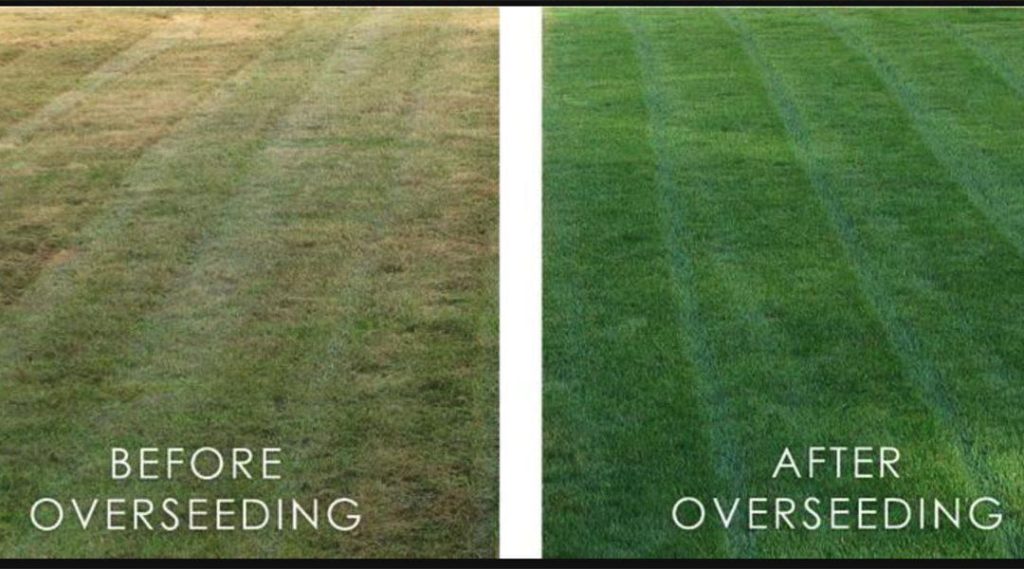
Adding fresh seed over existing turf quickly turns thin grass into a plush carpet. This simple move offers a lot of benefits like filling bare spots so light can’t reach weed seed and boosting root variety for better drought and disease resistance. The surge in new shoots triggers lawn thickening, crowding out crabgrass and other invaders without chemicals.
Because mature and young blades share the same soil, the process drives grass rejuvenation instead of a costly start over with sod. With the canopy dense, roots deepen, soil stays cooler, and nutrients cycle more efficiently, all working together to improve lawn health year after year.
Timing It Right: The Best Seasons to Overseed
Early fall lines up the perfect mix of warm soil and cool nights that cool-season grasses crave. In northern zones, overseeding at least six weeks before the first frost lets seedlings root fast while weeds slow down.
Southern lawns built on Bermudagrass or Zoysia respond a lot better once soil hits 75 °F in late spring. Extra daylight boosts growth while rains keep seed beds moist. Want thicker rye or fescue? Follow proven fall overseeding tips: aerate, seed, and keep soil damp until blades reach mowing height.
Prepping Your Lawn for Overseeding Success
Fresh seed needs a clear runway before landing on the lawn. Start by cutting existing grass to about one and a half inches, bagging clippings so seedlings get light. Rake out leaves, twigs and excess thatch to expose bare soil.
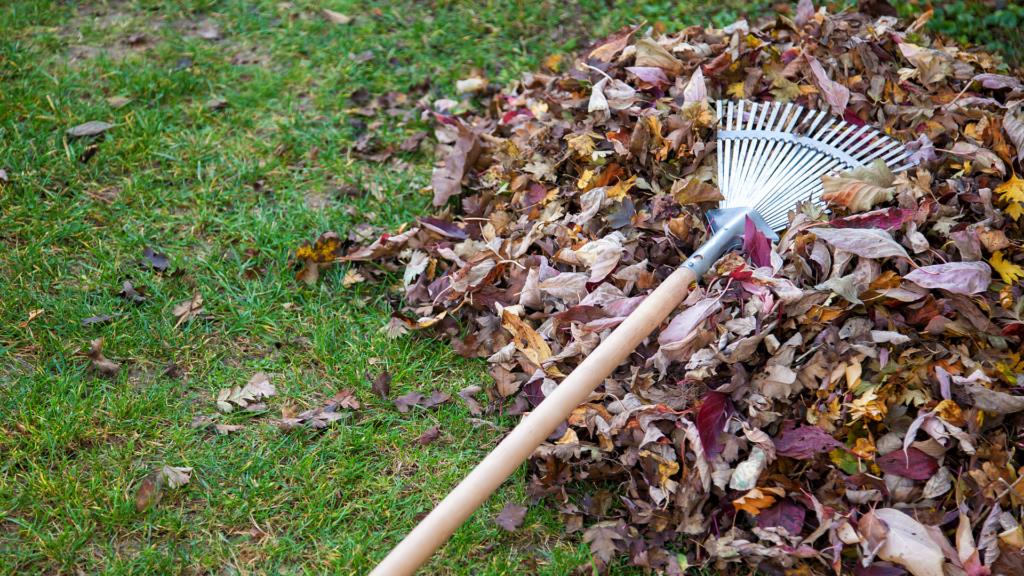
Next, pull a core aerator. They loosen compacted ground and boost oxygen and water flow. These lawn prep steps create reliable seed to soil contact that speeds germination and anchors stronger roots. Keep the surface moist and apply a starter fertilizer to lock in solid overseeding preparation after thorough aerating your lawn.
Choosing the Right Grass Seed for Your Climate
Choose cool season grasses for northern zones. Kentucky bluegrass, perennial ryegrass, and tall fescue stay green from fall through spring. In Gulf Coast or desert heat, a warm season lawn thrives with bermuda grass or zoysia that shrug off scorching summers.

Mix shade-tolerant fine fescue into sunny blends so every corner fills in evenly. Look for bags that pair disease-resistant cultivars with coatings that speed germination. Smart seed selection matches soil pH and foot-traffic levels too, helping plugs and patches blend into one rich color.
Step-by-Step Guide to Overseeding Your Lawn
Begin by mowing grass to one-third its height and raking out thatch so seed reaches soil. Aerate compact spots, then broadcast quality seed.
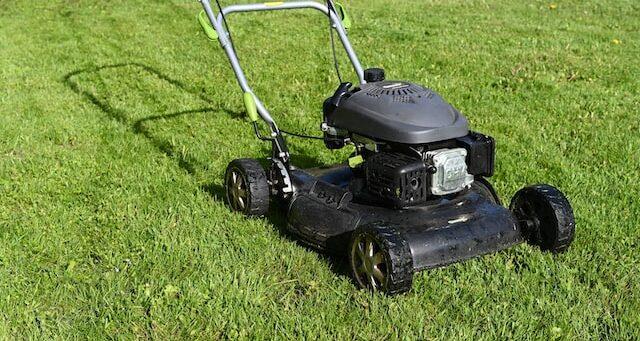
Make two passes at right angles to guarantee even coverage. Lightly rake again for soil-seed contact and top-dress with compost or peat to lock in moisture and speed germination.
Keep the area damp with brief waterings two to four times daily until sprouts reach an inch, then shift to deeper, less frequent sessions. Follow these basics and the thin turf turns dense. This quick lawn renovation thrives when the seeding lawn is finished with a starter fertilizer.
Caring for Your Lawn After Overseeding
Fresh seed is in the soil and now the real work starts. Effective post-overseeding care keeps those baby blades alive. Begin watering new grass lightly two to three times a day for 5-10 minutes so the top inch stays damp.
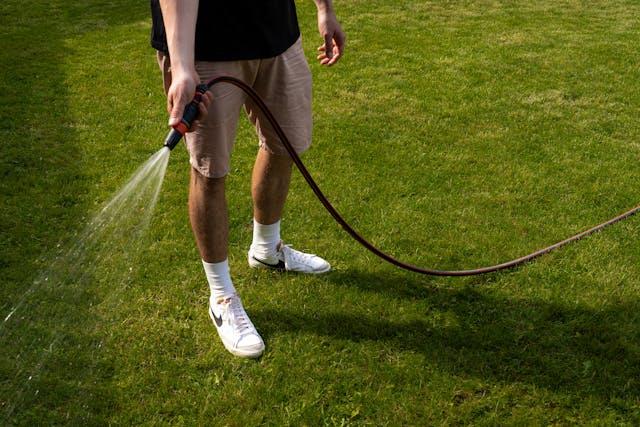
After germination, shift to deeper soaks every two to three days, about one inch per week, to push roots down. Do not mow after you are done overseeding until new turf reaches three inches, usually two to four weeks, and use a sharp blade set high to avoid tearing seedlings.
Finish with smart fertilizing: starter nutrients at seeding, then a balanced feed three to four weeks later to strengthen roots without burning tender growth.
Avoid These Common Overseeding Mistakes
Overseeding too late in the season tops the list of mistakes you should avoid. Cool-season grass seeded in mid-summer often withers or never sprouts. Skipping aeration means seed sits on thatch instead of soil, causing thin patches and seed germination issues. Core-aerate first and rake the plugs back in for solid contact.
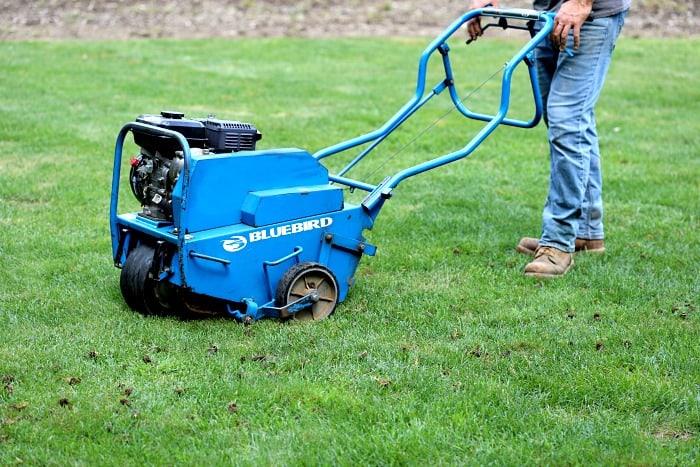
Another overseeding problem is heavy daily soaking, as seed can rot or wash away. Switch to gentle, short watering two to three times a day until sprouts reach an inch, then taper. Follow these lawn care tips to keep new blades thick and healthy.
When Overseeding Isn’t the Right Solution
Compacted soil can feel like concrete, letting seed dry out instead of rooting, so core aeration or top-dressing with compost rank as alternatives to overseeding. Severe grub or chinch bug outbreaks shred roots.
Control the insects first, then schedule a full lawn renovation if roots are gone. When more than half of the turf is weeds or bare earth, the sod vs overseeding choice leans toward fresh sod for quick, reliable coverage. Finish by watering, light fertilizing, and seasonal mowing to speed long-term lawn restoration.
Conclusion: Make Overseeding Part of Your Annual Lawn Routine
Fresh seed each fall thickens turf, introduces stronger grass varieties, and fends off weeds and drought. That combination of overseeding benefits adds up quickly. Building yearly overseeding into the calendar turns maintenance into a simple habit rather than a rescue mission.
Pair the seed drop with aeration and a light feeding, and the result becomes a healthy green lawn that stands up to heavy foot traffic and summer heat. Lock this into the thick lawn routine and watch the grass pay you back season after season.
Share photos of your revitalized lawn in the comments below!


